Description
Introducing the Modernist Cuisine Special Edition Baking Steel
We love Neapolitan-style pizza. With its bubbly crust cooked to perfection, it is held to high esteem in the pizza world for good reason. The trouble is that home ovens don’t reach the scorching 800 °F used to create a blistering crust in a wood-fired oven. We researched this problem and in Modernist Cuisine shared how a steel plate can help give home ovens a needed boost to create Neapolitan-style pizza.
We partnered with Baking Steel and are happy to announce that we’ve created the Modernist Cuisine Special Edition Baking Steel to consistently deliver perfect Neapolitan-style pizzas in a home oven. We performed rigorous tests to find the perfect balance between steel thickness, performance, and weight.
True pizza fans are tireless. They’ll trek to Naples for thin crust, Chicago for deep dish, and Coney Island for coal-fired. When it comes to slinging pies at home, they’re just as driven, sniffing out authentic recipes, sourcing authentic yeasts and flours, hand-pulling mozzarella, even getting the density and the PH level of the dough just right. And for getting a home oven to perform as much as possible like the wood-fired dome ovens of Neapolitan pizzaiolos—well, that’s where ingenuity comes in.
Pizza geek Andris Lagsdin was reading Modernist Cuisine, and noted Nathan Myhrvold’s observation that the best surface for baking pizzas at home would be a thick steel plate. Well, Lagsdin works at Stoughton Steel, a Massachusetts steel company, so—long story short—he devised a 1/4-inch slab of recycled industrial steel, called it the Baking Steel, and crowd-funded the product launch in September 2012. The company now has three models: the original (1/4-inch-thick slab that weighs 15 pounds); The Big! (a 1/2-inch slab weighing 30 pounds); and, essentially splitting the difference, the Modernist Cuisine Special Editionwe reviewed here (a 3/8-inch, 22-pound slab, released last spring).

Since it launched, pizza fans have tested the Baking Steel with hygrometers and high-heat digital thermometers, the kind of finely calibrated tools more common in labs than condo kitchens. (For a particularly good test of the Baking Steel versus a conventional pizza stone, check out J. Kenji López-Alt’s Pizza Lab side-by-side on Serious Eats’ Slice blog.) Our question during testing wasn’t whether the Baking Steel would produce a superior crust (we had faith that it would), but whether it’s a practical purchase for the casual home pizza maker.
This is a beast to haul around, recommended for the strong of back only. It’s 16 inches wide and 14 inches deep, a 3/8-inch thickness of recycled steel that weighs 22 pounds. It’s embossed with the Modernist Cuisine logo, has dog-eared corners that look kind of cool, and is said to be indestructible (having hauled it around the CHOW Test Kitchen several times, we believe it). It’s preseasoned; you might eventually have to season it again, depending on how much you use your steel and how you care for it, but the Baking Steel has instructions for that on its website. You have to clean it after using—Baking Steel recommends using cleaning blocks (you can buy them on its website). Baking Steel says you can also use it as a stovetop griddle for (since there’s no edge to catch liquids) relatively nonrunny foods like pancake batter.

We tested our Baking Steel with three things: pizza, of course; breads, in the form of La Brea Bakery take-and-bake baguettes; and, because we wanted to test it the way we use our pizza stone, a frozen pizza. In each case, we followed the Baking Steel’s instructions, cranking the oven to 500 degrees Fahrenheit and heating the slab on the lower shelf for 45 minutes before sliding our test subjects on top.
Bread: After 8 minutes, the Baking Steel turned our take-and-bake baguette into an amazingly crisp-crusted, beautifully caramel-brown specimen, with pizzalike leopard spotting on the bottom (below, top). The loaf we baked in a second oven, on a plain rack as instructed, turned out pale and a little soft (below, bottom). Way to go Baking Steel.

Frozen pizza: Just like it did for our take-and-bake bread, the Baking Steel turned a frozen margherita pizza into an overachiever. Unlike that of the conventionally prepared version, the Baking Steel crust was perfectly rigid after 7 minutes, with a handsome black ring on the bottom like you find in true Neapolitan thin crust. This is probably the best frozen pizza we have ever produced. But then, with pizza-geek engineering on our side, we weren’t exactly surprised.
Pizza: We made a couple of pizzas, with tomato sauce, mozzarella, and cured meat, and our results were consistent: After 9 minutes in the oven, our pies had beautifully charred undercarriages, with handsome leopard spotting. The crusts’ structure had lovely arched chambers, and a crisp-chewy texture we admire in pies from our favorite Neapolitan pizza joints in San Francisco and Oakland. This was undoubtedly the best homemade pizza we’ve produced, with a crust structure better than the pies we’ve baked on a couple of different brands of pizza stones over the years. Our inner pizza geek was more than satisfied.
Five Additional Uses for Your Baking Steel
In our quest to create the perfect baking steel for mimicking the results obtained by a traditional wood-fired oven, ultimately achieving pizza bliss, we also tested other uses for such a device. We examined several possibilities, including hot and cold preparations. Because the baking steel is 22 lb of highly conductive thermal mass, it can stably hold both high and low temperatures. Below, you will find a few of our favorite options. If you have a new idea for its use, let us know in the comments section.
1. Antigriddle: Steel has high heat capacity and great conductivity, which is why it works so well for pizza. But it also works in opposite extremes, efficiently freezing foods through conduction. We experimented with a PolyScience antigriddle while writing Modernist Cuisine and found that by freezing the baking steel, we could achieve similar results. After watching street vendors in Thailand make “ice-cream pad” (rolled-up ice cream) on YouTube, we were hooked and didn’t stop until we were able to replicate this charming treat by chilling our steel to ?15 to ?9.5 °C / 5 to 15 °F. Check back next week when we share how to make “ice-cream pad” using the baking steel.
2. Griddle: Naturally, the baking steel also makes a great griddle. Place your baking steel on your stove or induction cooktop to fashion a griddle. Because it is larger than your typical skillet (the baking steel is 41 cm by 36 cm by 1 cm / 16 in by 14 in by ? in), you have more room for your eggs and pancakes.
3. Flat Tandoor Oven: A pizza without sauce or toppings looks an awful lot like naan, which inspired us to use the steel as a makeshift, open tandoor oven. Heat the baking steel on a stovetop or induction burner on high and slap on your naan dough. In moments, your naan will have a blistered surface not normally obtainable in a home oven.
4. Cold Plate: Your baking steel will also keep food cool without freezing ita perfect solution for a platter of sushi. Chill the baking steel in the freezer for a few hours. Depending on how cold you want your food to be, the time will vary. This is a great way to keep sensitive food cold without dealing with piles of ice and the inevitable clean up. Keeping your food cool will also extend the amount of time it can sit outside of the refrigerator before entering the danger zone.
5. Teppan: Teppanyaki, the Japanese style of cuisine popularized by restaurants in the U.S., uses an iron plate called a teppan. This metal griddle quickly cooks food to the delight of onlookers. We can’t guarantee that you’ll nail down the flaming onion on your first try, but it’s a good place to start, as well as a fun idea for dinner parties.

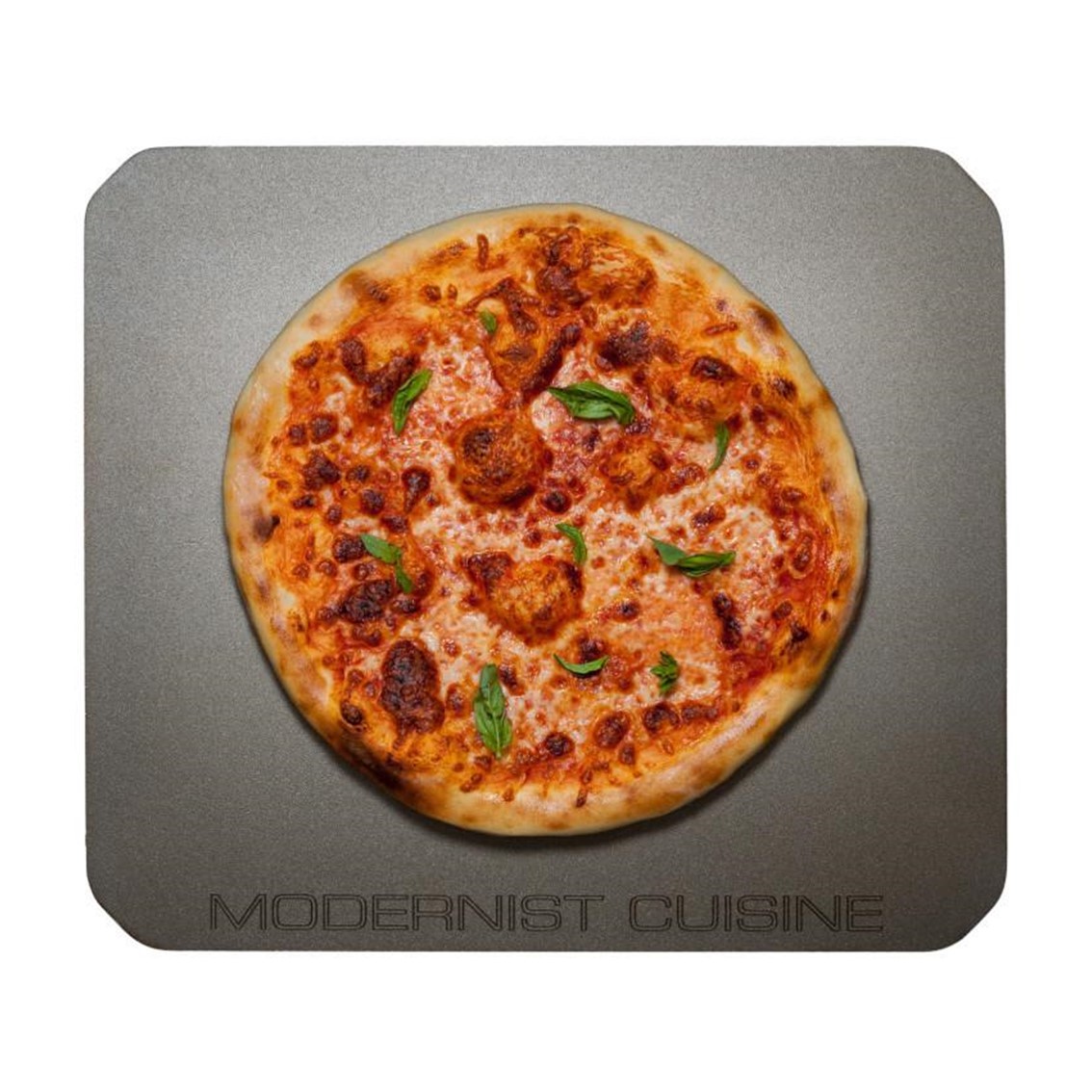

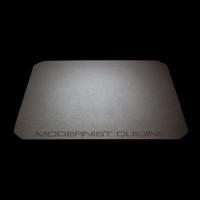
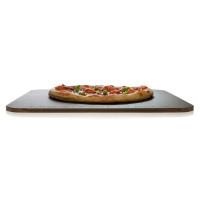

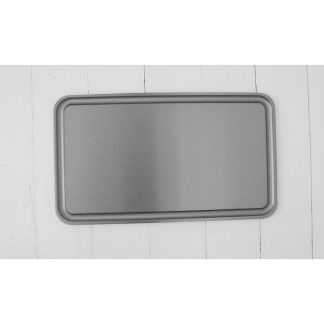
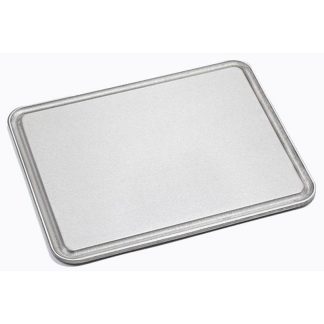

Ruby L. –
The design is just what I need. The modernist design of this Baking Steel covers my stovetop perfectly. Thank you for the fast delivery. I now enjoy the Modernist Baking Steel and I’m loving it in every use!
Aliyah Robinson –
I never knew I needed this until I got it in my hands. I made the best purchase with the Baking Steel this year and I don’t think anything can top this out of the hundreds of online orders I did. This is slightly more costly than the average pizza stone or steel sheets and pans but the value it bring to my kitchen is incomparable. Lovely pizzas come out each and every time I use it. My breads taste like they were handcrafted by the gods themselves. What’s a pizza stone again? lol!